Post-apocalyptic novels and pandemic literature is all the rage right now, and it’s easy to understand why, as well as what makes the concept such fertile ground for storytelling.
Even though the world isn’t ending, we are in uncertain times and people like to know they’re not alone. Or maybe they just want reassurances that others have it worse.
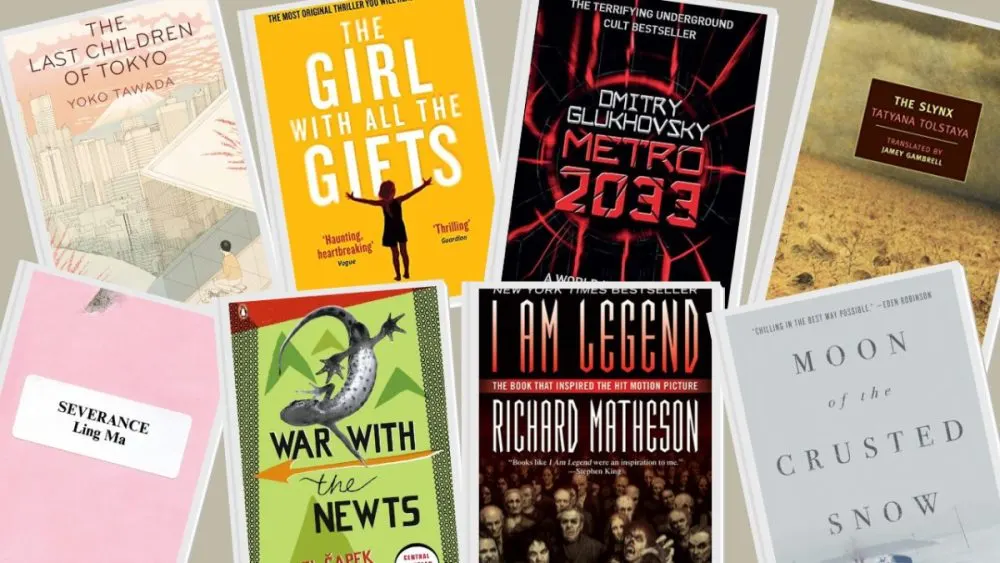
As the name suggests, post-apocalyptic fiction is about a civilisation that has collapsed. Often this is due to some pandemic (Station Eleven), natural disaster (The Drowned World), nuclear war (On the Beach) or aliens (The Day of the Triffids).
Not surprisingly, post-apocalyptic novels often intersect with fantasy, sci-fi, dystopian and horror.
Outstanding Post-Apocalyptic Novels
Commercial post-apocalyptic fiction first emerged in the late 19th century with Mary Shelley’s The Last Man, although arguably it has been around much longer if you include folklore, such as the biblical story of the flood.
Following WWII and the very real and sudden fear of a nuclear war, post-apocalyptic fiction found itself on the rise in popularity.
Although these are fears shared by people the world over, the books available and widely known within the sub-genre continue to be largely from white, English-speaking authors. So, let’s change that.
Here are some of the best post-apocalyptic novels, many of which have been translated, or were written by people of colour, because there is no better time than now to come together!
To the Warm Horizon by Choi Jin-young
Translated from the Korean by Soje

In this harrowing post-apocalyptic novel that brings to mind others of its kind — The Road, Oryx and Crake, I Am Legend — Korean author Choi Jin-young shows us how, against all odds, love can win out in the end.
Set after a disease has ravaged the planet, To The Warm Horizon follows two young Korean women who have met on the road in the cold wilds of Russia.
Dori has lost her parents to the disease and is now in charge of her deaf and mute sister. Jina is travelling with her extended family and childhood friend Gunji.
Dori and Jina’s encounter leads to some raw and chilling events, exactly the kind you’d expect to see in a disease-wrought, post-apocalyptic wasteland.
But against all of this, the love and dedication that these two women find for each other keeps the reader hopeful.
This is a beautiful lesbian love story that uses this hook to set it apart from the less hopefully novels that populate the genre of post-apocalyptic fiction, making it one of the most unique post-apocalyptic novels out there.
Buy a copy of To the Warm Horizon here!
The Last Children of Tokyo (The Emissary) by Yoko Tawada
Translated from the Japanese by Margaret Mitsutani

Conceptually, The Last Children of Tokyo (known in the US as The Emissary) is one of the most unique post-apocalyptic novels of recent years.
As The Last Children of Tokyo begins, Yoshiro, a retired author, has passed his hundredth birthday and still spends every morning out jogging with his rent-a-dog (there are few animals left in Japan, and certainly no wild ones).
His great-grandson Mumei, however, was born, like every member of his generation, with grey hair and failing health. His life expectancy is poor, and his bones will likely fail him before he exits his teens.
Yoshiro and Mumei exist in the book as fascinating examples of their society: a Japan in which the cities have mostly been abandoned, ties with the outside world have been cut, all other languages are no longer taught or spoken.
Many of the middle-aged people have moved to Okinawa, where they work on fruit farms which are almost completely the sole providers of food for the other islands of Japan. Yoshiro’s daughter is one such farmer.
Tawada takes the time to hold a mirror up to not only pollution but also the average person’s fear of GM crops, pharmaceutical corporations, and so on.
She wonders where contamination of our food and water may lead us, but also the crippling power of irrational fear. And she does this with gall, discomfort, and more than a little humour.
By a copy of The Last Children of Tokyo here!
Who Fears Death by Nnedi Okorafor
Onyesonwu, whose name means Who Fears Death, is the product of a brutal sexual assault, named so by her mother in hopes her name would inspire courage.
As a mixed-race child, Onye is rejected by both the whites (Nuru) and blacks (Okeke). She is an Ewu, children whose skin colour is believed to be the result of violence.

Who Fears Death introduces us to a post-apocalyptic Africa following a nuclear holocaust rampant with genocide and wanton violence.
Although it is seemingly set in the very distant future, many of this world’s problems are easily recognisable today, particularly the sadistic sexism and racism many of the characters are subjected to.
Okorafor has created a world full of sorcery, folklore and heroism. It is equal parts terrifying and bewitching, and you’ll never be the same again after reading it.
Buy a copy of Who Fears Death here!
Metro 2033 by Dmitry Glukhovsky
Translated from the Russian by Natasha Randall

If you want unsettling, post-apocalyptic fiction, the Russians have you covered.
Following a nuclear holocaust, what little remains of Moscow’s population have been forced underground into the city’s extensive metro system.
Whole communities have developed around the different stations, wars are waged over resources and differing governing strategies.
To make matters worse, mutated creatures stalk the land above, ensuring those beneath will never see daylight again.
20 years after the nuclear war that drove the survivors underground, a young man named Artyom is tasked with delivering a message that could have unimaginable consequences.
Metro 2033 was also turned into a successful video game franchise with a dedicated fanbase which really nailed the tone and atmosphere of an unsettling, gruesome, and nightmarish post-apocalyptic world.
Buy a copy of Metro 2033 here!
The Girl With All the Gifts by M.R. Carey

The Girl With All The Gifts was Carey’s first foray into prose, after writing many award-winning comic books, and what a breakout hit it was.
Blending sci-fi and horror to create one of the fiercest and best post-apocalyptic novels, this book is a dazzling exploration of human connection.
Our protagonist, Melanie, lives in a cell. Every day, she is strapped into a wheelchair and wheeled into a classroom full of other young children where they learn subjects like maths and English, like in any other school.
Melanie loves one teacher in particular, and hates the military sergeant who treats her with fear and disdain.
Soon enough, we learn that the world outside this military base is infested with zombie-like things that have been infected with the fungal cordyceps (just like in The Last of Us).
Melanie and the other children are infected with the fungus, and yet they remain calm and lucid and intelligent. That is, unless they are given the chance to taste human flesh, in which case they become feral and dangerous.
Sergeant Parks and the scientists at the base believe that Melanie is dead, and that what they are talking to each day is the fungus talking through her body. She is simply a test subject.
Beginning in a cramped prison cell and eventually opening up into a dangerous trek across the southeast of England, The Girl With All The Gifts is a frantic page-turner and one of the finest modern sci-fi books around.
Buy a copy of The Girl With All the Gifts here!
The Slynx by Tatyana Tolstaya
Translated from the Russian by Jamey Gambrell
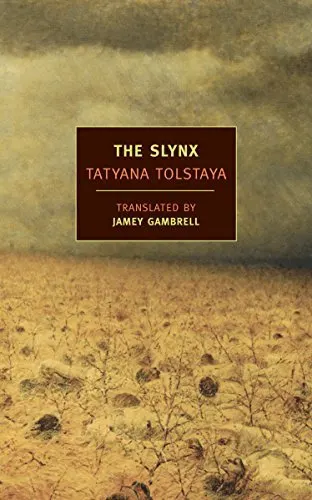
This dystopian fantasy is often compared with Anthony Burgess’ A Clockwork Orange.
Set two hundred years after the end of civilisation, The Slynx follows Benedikt, a lower member of a somewhat middling class who transcribes old books written before “The Blast” and presents them as the words of the new leader.
Benedikt considers himself to be leading a satisfactory life, being neither privileged nor a serf, and is happy to own a house and not have any mutations that are now commonplace in society.
So far he has managed to avoid both the Saniturions, who come for those who show any unwanted sign of Freethinking, and the legendary screeching Slynx that lurks in the wilderness beyond. But is it only a matter of time?
American War by Omar El Akkad

In 2074, the world is in crisis. Most coastal cities are at least partially submerged in the oceans, certain regions are now wastelands and the United States is in the middle of the second civil war over a few Southern states’ unwillingness to abandon fossil fuels.
The war is vicious, forcing many into refugee camps as the south is sealed off from the north.
One of these camps is Camp Patience, where Sarat Chestnut and her family wind up after her father’s death.
Although she is barely six years old when the war breaks out, through a series of unfortunate events, Sarat grows into an angry and radicalised young woman.
Told from even further in the future by a historian documenting the second civil war, American War is a terrifying glimpse at our future.
Buy a copy of American War here!
Severance by Ling Ma

An offbeat, satirical novel that’s one part office slice-of-life and two parts wryly funny cataclysm.
Severance follows the story of Candace Chen, a first-generation American millennial who spends her days in New York overseeing the manufacture of Bibles for a publishing company.
Then comes a pandemic of “Shen Fever” – a fictional, fungal infection that causes fever and saps at the consciousness until victims are reduced to a drone-like state and then die.
The city quickly stalls, then grinds to a halt, and before long Candace is left alone in New York, unfevered and seemingly immune, taking pictures of the now abandoned ghost town.
Eventually a group of survivors sweep through, led by former IT technician Bob, who bring Candace along on their way to “the Facility”, which Bob promises to be a haven where society can begin anew.
But Candace has a secret that will cause her serious trouble. Should she stay with this group of “saviours”?
I Am Legend by Richard Matheson
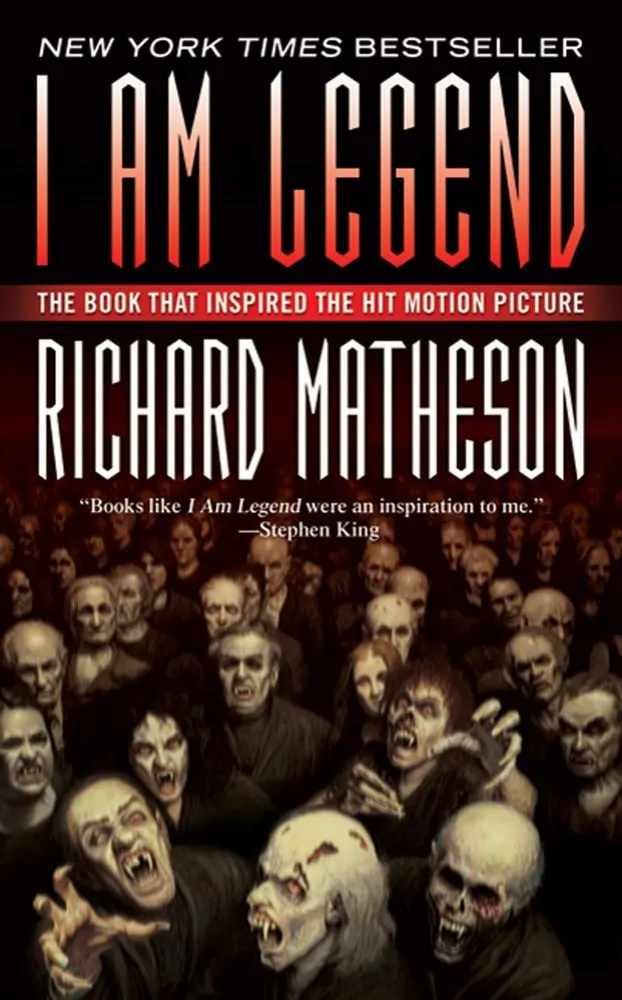
I Am Legend is a 1954 novel that defined the concepts of global plague and post-apocalyptic fiction, and this novel’s particular plague has wiped out untold numbers of people and turned the rest into vampires.
One man survives, locked away in his LA home. And over the course of the novel, he, the last human in a society of vampires, becomes the titular legend. He is now the vampire in a society that has normalised vampirism.
This is a clever inversion of vampire mythology. In a world where every surviving person is now a vampire, the one human is, himself, the vampire; the legend; the other.
Of all the post-apocalyptic novels here, I Am Legend is one of the most wholly unique, while also wonderfully adhering to the traditions of vampire lore: blood-sucking, garlic, and crucifixes.
Buy a copy of I Am Legend here!
The Wall by Marlen Haushofer
Translated from the German by Shaun Whiteside
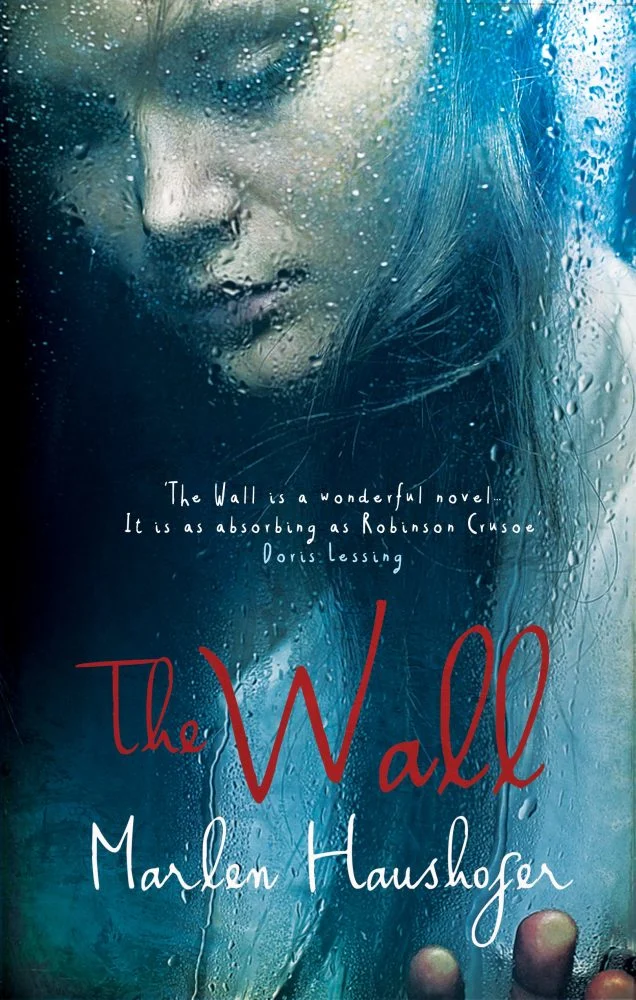
Originally published in Germany, The Wall stands as a meditation on isolation, humanity, and the practicalities of self-sufficient survival.
Our protagonist, an unnamed middle-aged woman on holiday at a remote hunting lodge in Austria, awakens one day to find that her two companions have disappeared and that she is alone.
Completely alone, it seems, as she appears to be trapped in her environment by an invisible wall of unknown origin.
The Wall follows the woman’s trials and troubles as she adjusts to solitude and learns to make the most of the land she has been left seemingly in charge of.
As she gradually begins to forget arbitrary concepts, such as the taste of sugar or the use of her own name, she is left wondering if she will ever meet another human being again.
Moon of the Crusted Snow by Waubgeshig Rice
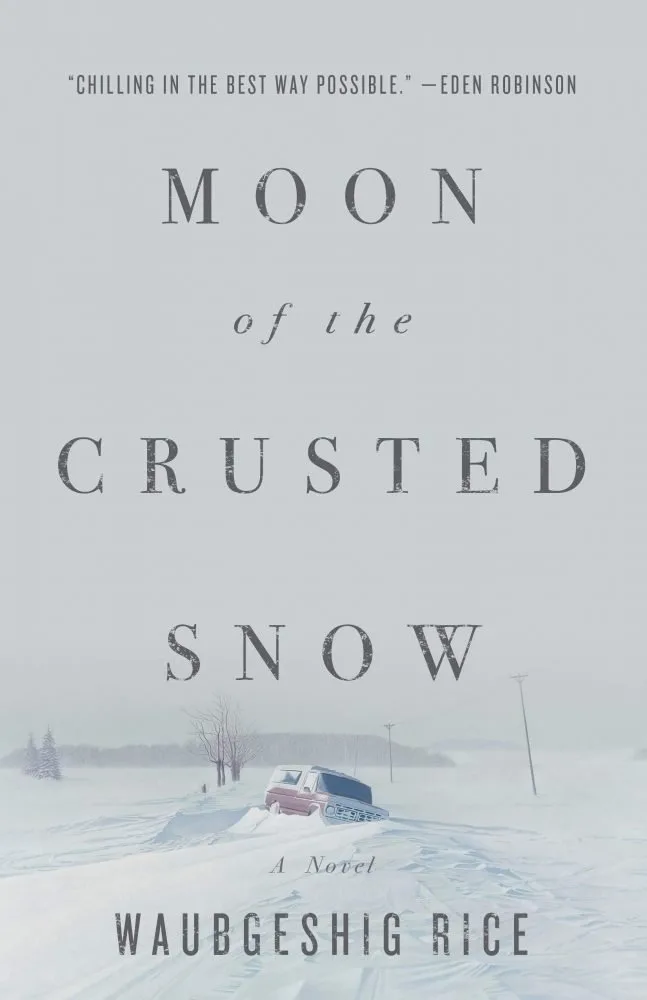
When infrastructure falls to pieces and resources run out, will your society endure? This is the subject of Moon of the Crusted Snow, as we follow a small northern Anishinaabe community through times of strife and hardship.
When food reserves become scarce, and community members struggle to maintain order, outsiders from the south begin to arrive; refugees from their own defunct nation.
With more people come more problems, and soon the former leaders are replaced by the newcomers. But the tensions, and the death toll, keep rising.
Will those frustrated by mounting chaos be able to take control and return to tradition, turning the tide for the better? As one society dies, another takes its place.
Buy a copy of Moon of the Crusted Snow here!
War with the Newts by Karel Čapek
Translated from the Czech by M and R. Weatherall
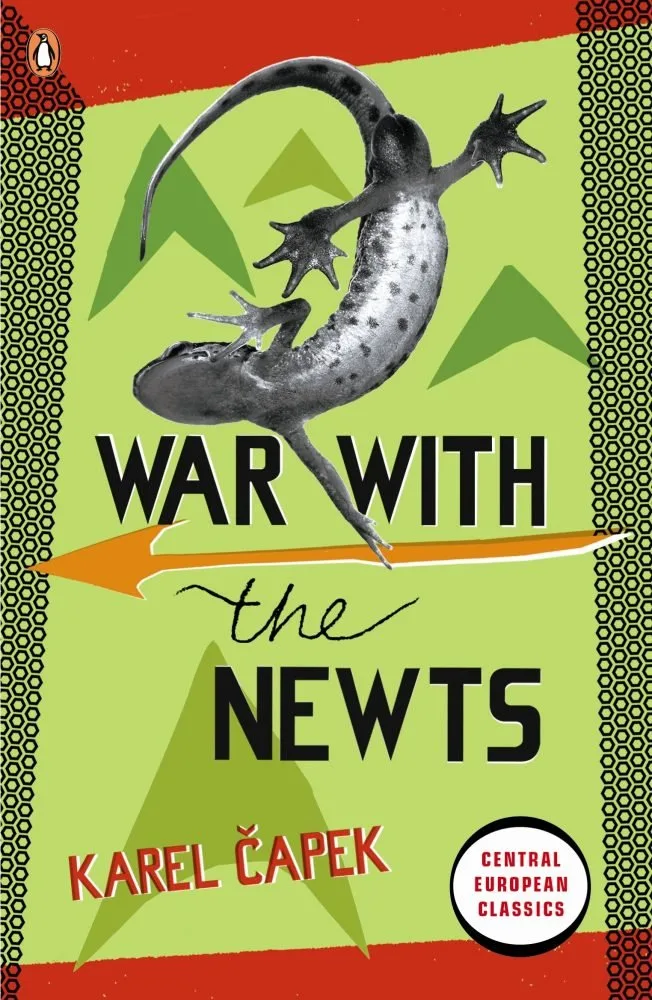
War with the Newts is a dark satire that sends up the political ideologies and practises present in the pre-war Europe of 1936, and is considered by many to be classic work of science fiction and dystopia.
On a small island near Sumatra, mankind discovers a species of giant, intelligent Newts (sometimes translated as Salamanders), and begins to exploit and manipulate them for the benefit of humanity.
However, over time the Newts learn and progress to such an extent that they begin to rival the humans’ place at the top of the animal kingdom.
Told at times in the style of an anthropological study, all of society’s many aspects are up for ridicule here, and Čapek pulls no punches with fascism, journalism, capitalism and even Hollywood all in the firing line.
The novel was blacklisted by the Nazis in 1940 in Germany.
Buy a copy of War With the Newts here!
The Blood of Angels by Johanna Sinisalo
Translated from the Finnish by Lola Rogers

Technically not post-apocalyptic, however, the world that unfolds in The Blood of Angels is certainly on the brink of total collapse. Why?
Because all the bees are disappearing. Some are dying, typically the queens, but whole colonies of bees are simply vanishing into thin air.
Crops can no longer be effectively pollinated and most country’s crops are in decline. Only the essentials are available, while the world fights over resources.
In remote Finland, which has yet to be hit by the crisis, beekeeper Orvo, discovers that his hives are suffering from colony collapse. At the same time, he is reeling from another unfathomable personal tragedy.
Told in alternating perspectives between Orvo and his son’s eco-blog, The Blood of Angels explores the themes of social responsibility and grief.
It also veers into sci-fi when Orvo makes an incredible discovery about the disappearances.
